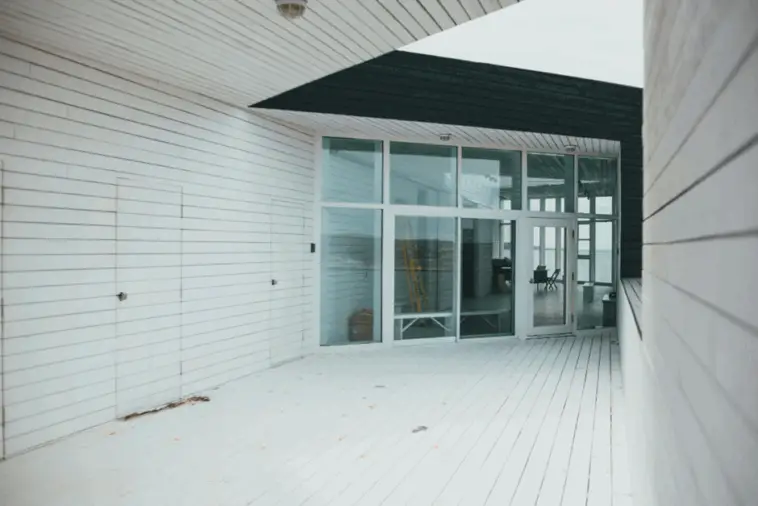Home security has seen a remarkable evolution over recent years, driven by innovations in technology. Modern systems provide homeowners with options that were unimaginable a decade ago.
From smart locks to surveillance cameras, the ability to monitor and control one’s home remotely has transformed the concept of safety. As people look for peace of mind, technology offers tools that fit a variety of lifestyles and preferences.
At the heart of these advancements is the integration of smart devices that communicate with each other. Sensors on doors and windows can alert homeowners immediately to unusual activity.
Motion detectors and environmental sensors now provide data about intrusions, and about fire, smoke, and carbon monoxide risks. This interconnectivity allows security systems to respond quickly, often before damage or loss occurs.
Seamless Access Control for Modern Homes
Managing who enters a home has become simpler and more precise thanks to new access control technology. Biometric systems, including fingerprint and facial recognition, are replacing traditional keys in many homes.
Smart locks connected to mobile apps let homeowners grant temporary access to guests or service providers remotely. The experts from Bayside Automatic Gates explain that combining these technologies with gates and barriers enhances security across multiple entry points, giving residents confidence whether they are home or away. Other cities and areas, including Chicago, Houston, and Atlanta, have seen rising adoption of such systems in residential neighborhoods.
Remote access reduces the risk of lost or duplicated keys. Temporary codes can be sent to maintenance workers or delivery personnel, and then automatically deactivated. Alerts notify homeowners when codes are used, allowing for real-time monitoring of movements in and out of the property.
Surveillance That Works Around the Clock
Cameras have become smarter, smaller, and more versatile. High-definition video captures details clearly, and some cameras can even identify specific individuals or vehicles.
Cloud storage ensures footage is safely preserved and can be accessed from anywhere. Homeowners are no longer limited to viewing video locally, making it easier to respond to unusual activity.
Artificial intelligence is being incorporated to improve detection and reduce false alarms. Systems can differentiate between pets, vehicles, and humans, notifying homeowners only when a genuine concern arises. Night vision and motion-triggered lights enhance protection, creating a comprehensive perimeter defense.
Integration of Home Security With Daily Life
Modern security solutions increasingly work alongside other home automation features. Lights, thermostats, and door locks can be controlled from a single platform.
This integration allows homeowners to simulate occupancy while away, deterring potential intruders. Voice assistants now provide an added layer of convenience, allowing people to secure their homes without manual operation.
Automation extends to alerts and notifications. When a sensor is triggered, homeowners can receive text messages, emails, or app notifications instantly. Some systems even connect to local authorities, enabling faster responses in emergencies. The coordination between devices and services ensures that homes are monitored effectively around the clock.
The Role of Mobile Technology in Security
Smartphones have become central to controlling home security. Mobile apps allow residents to check cameras, lock doors, and adjust settings from anywhere. Push notifications provide immediate information, keeping homeowners informed in real time. Remote access reduces the reliance on physical presence for security management.
Geolocation features can trigger actions automatically. Doors may lock when a homeowner leaves the property, or alarms can disarm when recognized family members arrive. This level of automation adds convenience while maintaining a high standard of safety.

Emerging Trends That Are Shaping the Future
Home security continues to evolve as technology advances. Artificial intelligence and machine learning are making predictive security possible.
Systems may soon anticipate potential threats based on patterns of movement or unusual behavior. Integration with neighborhood networks allows residents to share alerts and collaborate on safety measures.
Energy efficiency is becoming part of the security conversation. Solar-powered cameras and low-energy sensors ensure that security does not come at the cost of sustainability. As the cost of technology continues to drop, these solutions are becoming accessible to a broader range of homeowners.
Balancing Privacy With Convenience
While security technology offers many benefits, privacy remains a key concern. Homeowners need to consider how data is stored and who can access it. Strong encryption and secure cloud storage are critical to maintaining trust. Regular software updates are necessary to protect against vulnerabilities that could compromise security.
Choosing systems that respect privacy while providing robust security ensures peace of mind. Educating residents on best practices for device management and data security is just as important as installing the technology itself.
Adapting Security to Individual Needs
Every home has unique security requirements. Location, property size, and lifestyle influence which solutions are most effective. Multi-level houses may benefit from integrated smart locks and video surveillance, while smaller homes might focus on motion detectors and door sensors. Customizable systems allow homeowners to build security around their specific needs rather than adopting a one-size-fits-all approach.
Professional consultation can help identify vulnerabilities and recommend appropriate measures. Security assessments evaluate entry points, visibility, and technology compatibility, providing a tailored approach that maximizes protection.
Technology has reshaped how homes are secured, offering advanced solutions that blend convenience, efficiency, and safety. Smart devices, mobile integration, and automated systems provide tools that keep homes protected while giving homeowners control at their fingertips.
As innovation continues, home security will become increasingly personalized, adaptive, and intelligent. By embracing these advancements thoughtfully, residents can achieve both peace of mind and practical protection.



